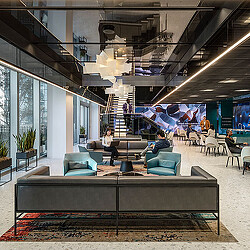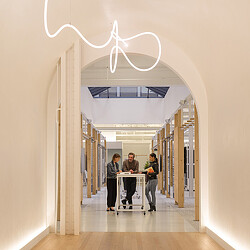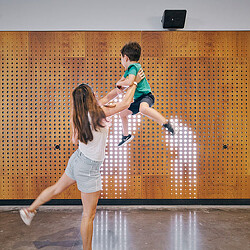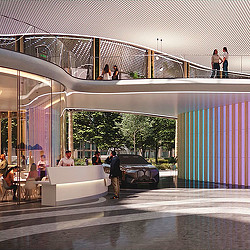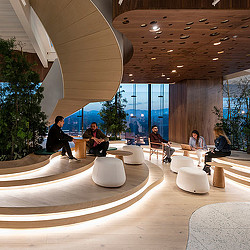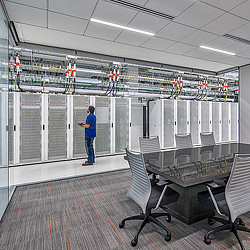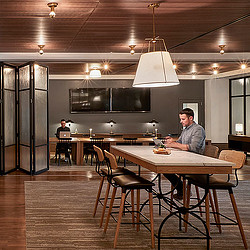The Future of Workplace Experience Is Here: How AI Is Transforming Spaces
The advanced integration of AI into physical environments has the potential to reimagine spaces as more efficient, connective, and inspiring.
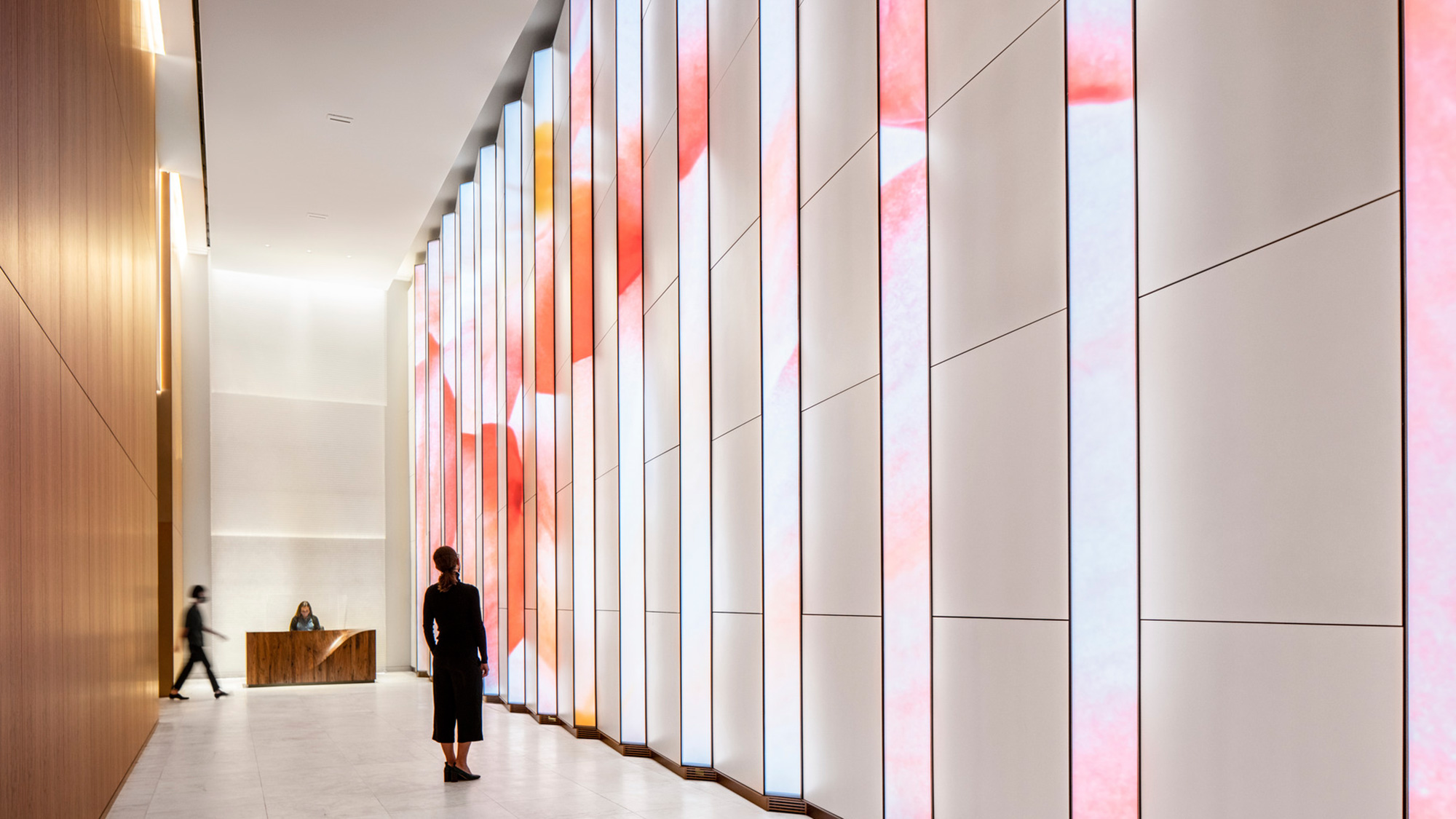
In just the past couple years, the generative AI landscape has evolved at a rapid clip. Since ChatGPT’s public launch in November 2022, the technology has continued to evolve and we’ve gone from considering generative AI as an experiment in natural language processing to a deeper understanding of how to use it — whether as text-based prompts or image-trained models such as Midjourney — as an emerging tool not only in the design process, but also as a creative and personalized medium for bringing new vibrancy and interactivity to finished architectural spaces.
AI is already revolutionizing how we design and interact with physical spaces. As breakthroughs continue to accelerate, Gensler has embraced AI in various forms, with effects that are transforming workflows, modeling, sustainability efforts, and immersive spaces.
With the deft hand of creatives, designers, and technologists, the advanced integration of AI into physical environments has the potential to reimagine the spaces where we live, work, and play to become more efficient, connective, and inspiring.
Here’s a look at how some of these transformations are taking place:
Creating Dynamic, Personalized Experiences With Generative AI
Remember the last time you walked past a bulletin board filled with outdated announcements? It’s easy to ignore static information, but what if that bulletin board could not only change its content dynamically but also tailor messages to the individuals, teams, or groups using a particular space so they have the most relevant and timely information?
Generative AI is transforming static environments into vibrant, personalized spaces. Imagine a corporate lobby where digital art changes based on visitors’ profiles or information displays that update in real-time to reflect the latest news and data. This technology captures attention and imagination, making every visit a unique experience.
Generative art is already making waves in interior spaces, not just for its ability to be bespoke to individuals, but also because of its capacity to infinitely evolve. Media architecture, or the embedding of digital media as a material in the built environment, has the ability to constantly surprise and awe visitors with new changing content.
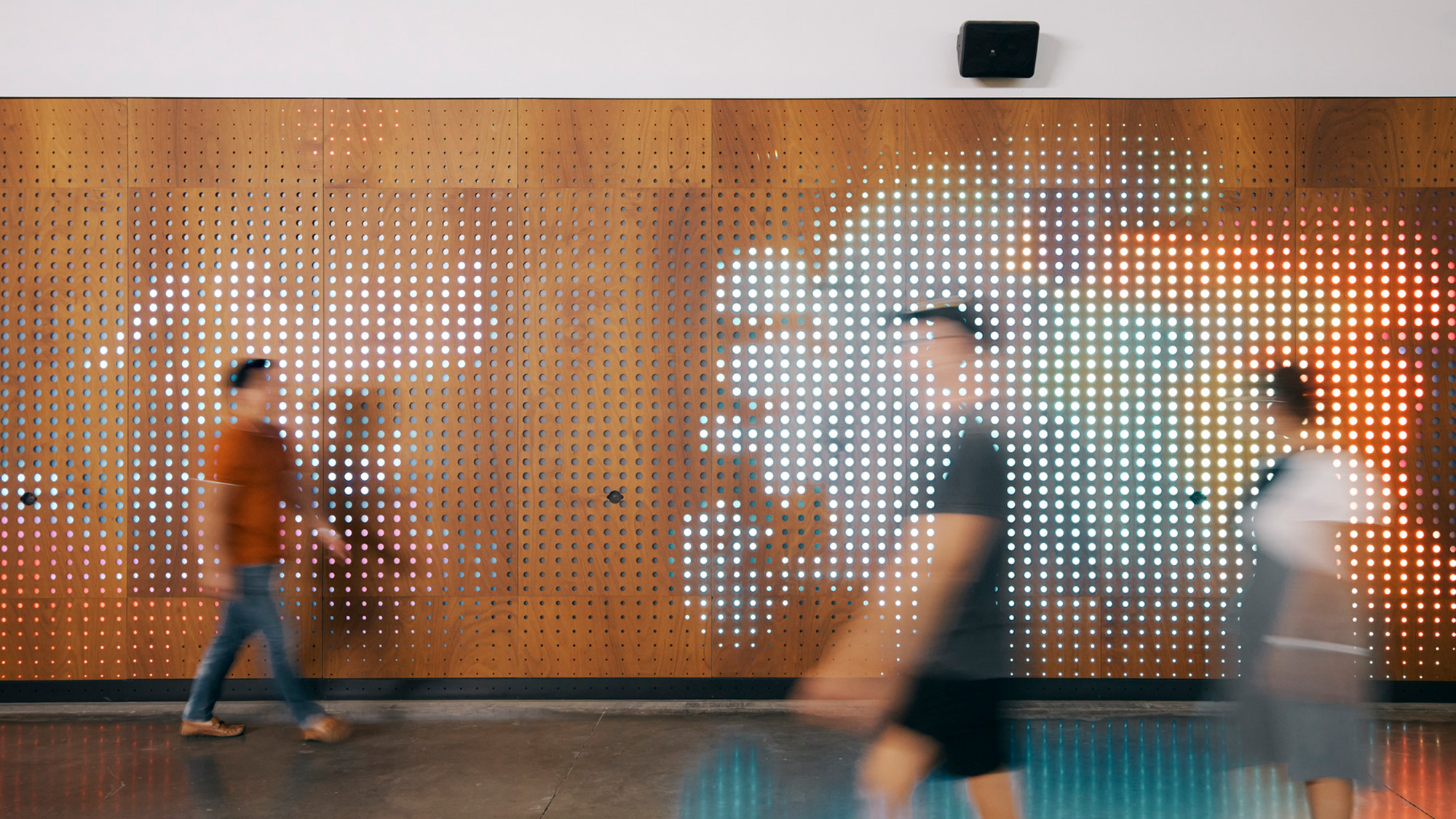
We are using generative AI to create spaces that feel alive. By continuously adapting to new information and user interactions, these environments remain engaging and meaningful, ensuring people never experience the same space twice with experiences that are hyper-relevant.
AI Presence in Physical Spaces: Leveraging Conversational Design
Walking into a room and having a conversation with the space itself might sound futuristic, but with AI, it’s becoming a reality. Conversational AI, made possible by Natural Language Processing (NLP), is changing how we interact with our environments by creating a new form of User Interface (UI).
Picture a supercharged conference room that knows your meeting schedule and adjusts the lighting and peripherals based on the kind of meeting you want to facilitate. Need to book a follow-up meeting? Just ask the virtual assistant. These AI interfaces offer seamless support, making interactions with our environments more intuitive and efficient.
As emerging technologies challenge human behaviors, we actively test and experiment with various solutions. When designing spaces that incorporate AI smoothly, we seek to demonstrate that technology enhances the user experience rather than disrupts it. From workplaces to public spaces and retail environments, conversational AI makes our daily interactions smoother and more pleasant.
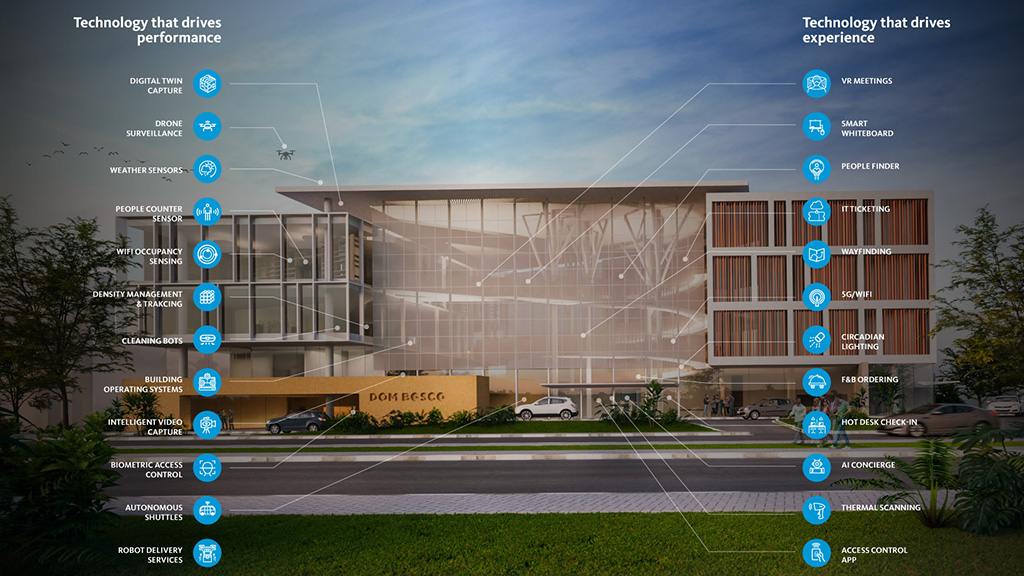
Enhanced Planning and Operations With AI
With the advent of AI, designers can now apply their skills more efficiently, exploring and visualizing numerous design directions to achieve the best outcomes.
Iterative Design Possibilities: AI allows us to explore multiple design scenarios interactively, making it easier to make informed decisions that optimize space utilization and resource allocation.
Efficient Planning: By analyzing vast amounts of data, AI helps us create layouts that are not only functional but also adaptable to changing needs.
Improved Operations: AI systems monitor and analyze how spaces are utilized, providing insights that help us continuously refine and enhance these environments.
Through training, AI can predict traffic patterns and visibility and determine points of friction, helping to design layouts that reduce congestion and improve workflow. This not only boosts productivity but also creates a more pleasant work environment. Spaces become measurable, smarter, and adaptable over time to the changing needs of their occupants.
Integrating Robotics Into Workplace Design
While AI-driven interfaces enhance our interaction with spaces, robotics represents the physical embodiment of AI. Imagine office buildings with robots that clean, deliver supplies, and even wash windows. These aren’t just science fiction fantasies; they’re becoming practical realities.
Workspaces now need to be designed to anticipate, accommodate, and be enhanced by the use of robotics, from smart cars and humanoid robots to flying drones. We imagine that office buildings may have designated robot pathways and charging stations, ensuring efficient movement and operation of service robots.
For instance, specialized robots might take on tasks like window washing on skyscrapers, shifting human jobs from the dangerous part of hanging off the side of a building to roles that involve operating robotic systems, monitoring water usage, and focusing on safety. This integration of robotics into workplace design not only improves efficiency but also enhances safety.
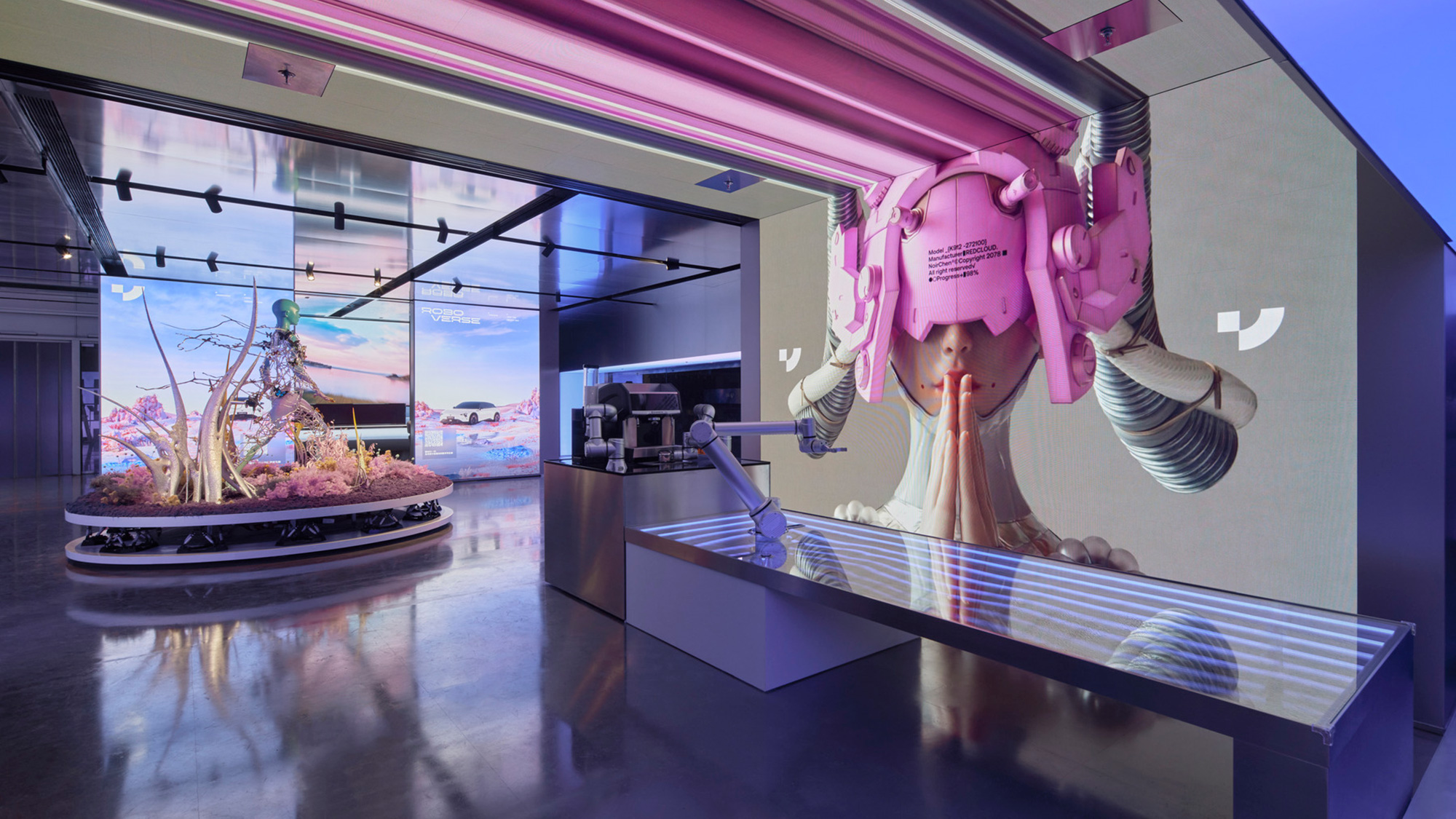
Embracing the Future: Innovations and Considerations
As we continue to innovate and reimagine the future in the context of the AI-emergent world, there are additional areas and considerations for integrating AI into workplace design:
- Ethical Considerations: Ensuring AI applications are ethical, inclusive, and respecting privacy is paramount. Numerous organizations, including The New York Times, Getty Images, and several major record labels, have sued technology companies for copyright infringement, citing unauthorized use of published work to train A.I. chatbots and image generators.
- Sustainability: Leveraging AI to create environmentally sustainable spaces can significantly reduce the carbon footprint of buildings.
- Group Collaborative Design: Using AI to enhance work environments that foster creativity and productivity.
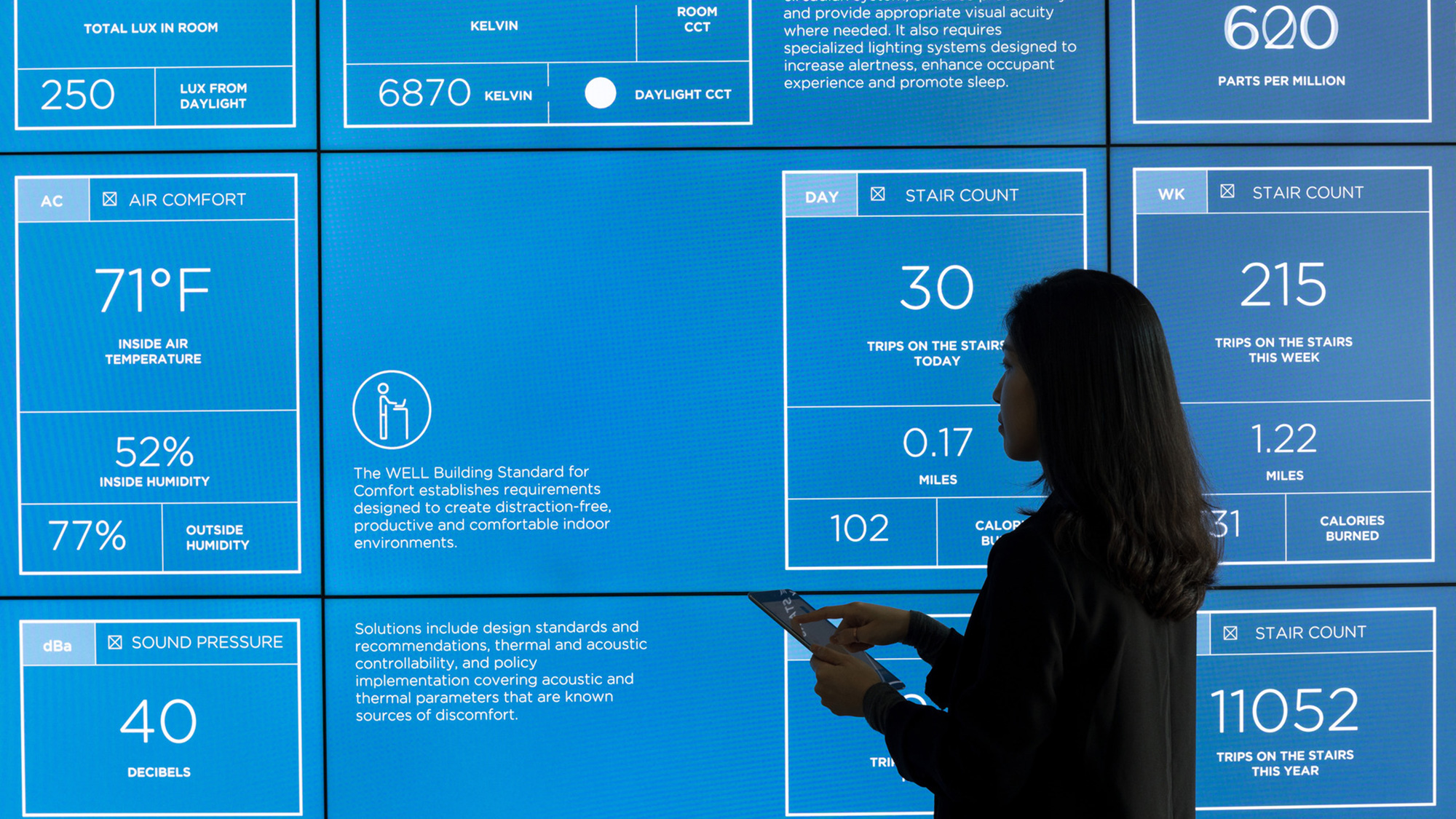
It is incumbent upon us, as human-centered designers considering the ways in which we design for and with AI in this incredibly precipitous moment, to ensure that we design holistically across disciplines to underscore and reinforce the value of community. As AI makes our workplaces more efficient and personalized, and technology becomes ever-present but less visible, workplaces must go the extra mile to make in-person connections even more of a priority. Community is more powerful than the individual, and workplaces are conveners of community. In a post-AI world, companies that understand how to leverage this technology while engendering a genuine sense of connection will excel in the future of work.
Gensler has teams steeped in design, technology, and digital experiences that are actively exploring and innovating with AI to create workplaces and public spaces that are not only functional and efficient but also engaging and inspiring. These are still early days in AI, we don’t have all the answers yet, and things are changing rapidly, but that’s what makes this journey so exciting. By harnessing the power of AI, we can design environments that adapt and evolve to meet the needs of today and the challenges of tomorrow.
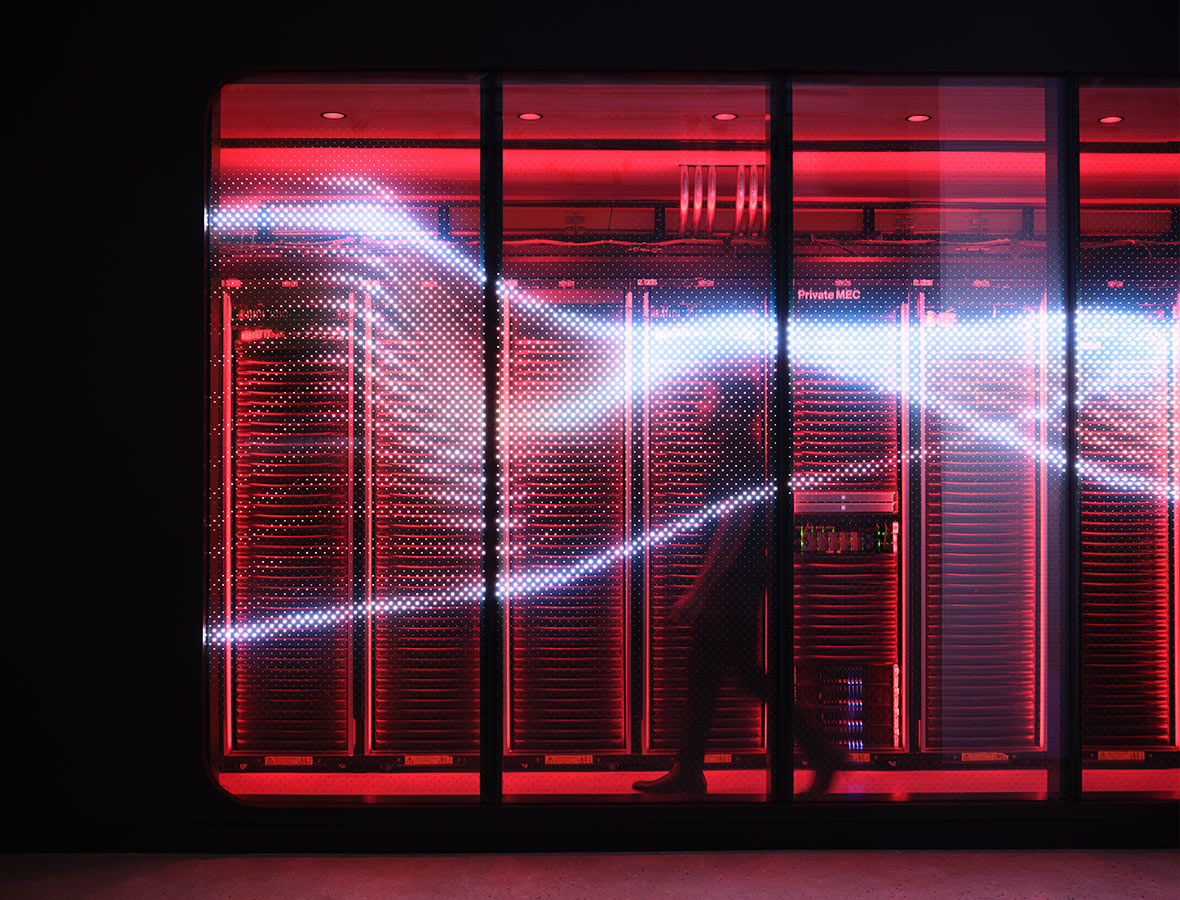
For media inquiries, email .


